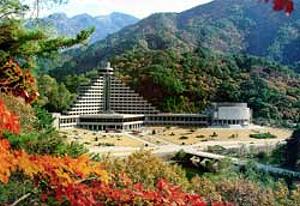 聯合國教科文組織(UNESCO)「人與生物圈計畫國際協調委員會」5月26日召開會議,決議從17個國家選出的22個新址,列入該組織的世界生物圈保留區網絡(World Network of Biosphere Reserves)中,這些新地點有的是整個島嶼,有些在歐洲的山區,有些是古代遺址,有些是老虎的保護區。
聯合國教科文組織(UNESCO)「人與生物圈計畫國際協調委員會」5月26日召開會議,決議從17個國家選出的22個新址,列入該組織的世界生物圈保留區網絡(World Network of Biosphere Reserves)中,這些新地點有的是整個島嶼,有些在歐洲的山區,有些是古代遺址,有些是老虎的保護區。
這些新址,包括馬來西亞及敘利亞裡的第一個UNESCO生物圈保留區,以及在北韓的一處皇陵。目前全球共有553個UNESCO生物圈保留區,分佈在107個國家。UNESCO生物圈保留區由UNESCO的「人與生物圈計畫」指定,用來作為測試各種不同整合性管理方法的地點,在每個地點進行陸地、淡水、海岸與海洋、以及生物多樣性的整合性管理。
這些生物圈保留區用來試驗及瞭解區域內的永續發展,特別是目前「2005至2014年聯合國永續發展教育十年計畫」(UN Decade of Education for Sustainable Development - 2005 through 2014)也正在進行中。
「人與生物圈計畫」在1970年開始進行,它提出一項跨領域的研究議題及建構能力的計畫,目標是要改善人們與環境的關係。
這個計畫的目標是要從生態、社會及經濟面向減少生物多樣性的流失,運用它的世界生物圈保留區網絡作為運作單位,來進行知識分享、研究與監測、教育與培訓、並和各地社區共同參與決策。
這些新加入的UNESCO生物圈保留區包括:
澳洲的大沙地區(Great Sandy)、德國布裡斯高地區(Bliesgau)、德國斯瓦比亞阿爾比山區(Swabian Alb)、印度諾克瑞克地區(Nokrek)、印度潘恰瑪地區(Pachmarhi)、印度西密里波(Similipal)老虎保護區、印尼蓋姆賽克卡西-峇都巴轄山(Giam Siak Kecil - Bukit Batu)野生動物保護區、黎巴嫩(Lebanon)穆薩山(Jabal Moussa)、馬來西亞珍尼湖(Tasik Chini)、墨西哥蒙特貝羅湖(Lagunas de Montebello)、葡萄牙佛羅里斯島(Flores Island)、跨葡萄牙及西班牙的吉爾斯/瑟瑞斯地區(Geres/Xures)、北韓妙香山(Mount Myohyang)、南韓珍島(Shinan Dadohae)、俄羅斯阿爾泰自然保護區(Altaisky)、南非範貝地區(Vhembe)、西班牙福特彎圖拉島(Fuerteventura)、敘利亞拉賈特生物圈保留區(Lajat Biosphere Reserve)、烏克蘭的達斯尼安斯基地區(Desnianskyi)、委內瑞拉的奧利諾科河三角洲(Delta del Orinoco)、越南湛島(銅老撾湛)-惠安古城(Cu Lao Cham - Hoi An)、以及越南的金甌角地區(Mui Ca Mau)。


「人與生物圈計畫國際協調委員會」也核可4個原有生物圈保留區面積的擴展,這4個保留區分別為巴西的大西洋叢林(Mata Atlantica)、芬蘭的北卡瑞里亞區(North Karelia)、英國的戴菲地區(Dyfi,現在改名為拜爾斯弗-戴菲生物圈Biosffer Dyfi Biosphere)、以及面積拓展達14倍,智利的拉.卡姆帕納.潘紐拉斯保留區(La Campana-Penuelas reserve)。
Whole islands, European mountain areas, ancient ruins and tiger reserves are among 22 new sites in 17 countries added to the UNESCO's World Network of Biosphere Reserves Tuesday at the ongoing meeting of the International Coordinating Council of the Man and the Biosphere Programme.
The new sites include the first UNESCO Biosphere Reserves in two countries - Malaysia and Syria and a sacred site in North Korea. There are now 553 UNESCO Biosphere Reserve sites in 107 countries.
Biosphere Reserves are areas designated under UNESCO's Man and the Biosphere Programme to serve as places to test different approaches to integrated management of terrestrial, freshwater, coastal and marine resources and biodiversity.
Biosphere Reserves are sites for experimenting with and learning about sustainable development, particularly during the on-going UN Decade of Education for Sustainable Development - 2005 through 2014.
Launched in the early 1970s, the Man and the Biosphere Programme proposes an interdisciplinary research agenda and capacity building aimed at improving people's relationship with their environment.
The program targets the ecological, social and economic dimensions of biodiversity loss and the reduction of this loss. It uses its World Network of Biosphere Reserves as vehicles for knowledge sharing, research and monitoring, education and training, and participatory decision-making with local communities.
The new UNESCO Biosphere Reserves are:
Great Sandy, Australia; Bliesgau, Germany; Swabian Alb, Germany; Nokrek, India; Pachmarhi, India; Similipal, India; Giam Siak Kecil ?Bukit Batu, Indonesia; Jabal Moussa, Lebanon; Tasik Chini, Malaysia; Lagunas de Montebello, Mexico; Flores Island, Portugal; Geres/Xures is a transboundary biosphere reserve shared by Portugal and Spain; Mount Myohyang, North Korea; Shinan Dadohae, South Korea; Altaisky, Russia; Vhembe, South Africa; Fuerteventura, Spain; Lajat Biosphere Reserve, Syria; Desnianskyi, Ukraine; Delta del Orinoco, Venezuela; Cu Lao Cham - Hoi An, Vietnam; Mui Ca Mau, Vietnam。
The International Coordinating Council of the Man and the Biosphere Programme also approved extensions to four existing biosphere reserves - Mata Atlantica in Brazil; North Karelia in Finland; and Dyfi - now renamed to Biosffer Dyfi Biosphere - in the United Kingdom, and a 14-fold extention to the La Campana-Penuelas reserve in Chile.




